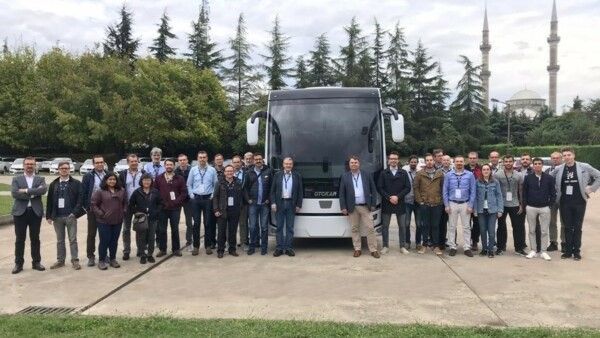APPSTACLE and KUKSA bring open source software development to automotive industry
Source: Roberto Morabito - Experienced Researcher - Ericsson
Bringing open source principles to the automotive industry could allow break-down of silos and increase flexibility of solutions across the whole automotive eco-system. This is one key goal for the ITEA 3 APPSTACLE consortium. One important element is the recently established Eclipse KUKSA open source project, which unifies technologies across the vehicle, IoT, cloud and security domains. The APPSTACLE community now invites researchers and developers to explore and contribute to KUKSA!

The automotive industry has evolved quite radically in the last few decades, when driver experience was all about vehicle aesthetics, engine and ergonomics, without any interaction with the outside world. Nowadays, even a single vehicle is like a small ecosystem, characterised by numerous components and highly sophisticated systems interacting with each other to ensure safe driving and a great driving experience. Network connectivity plays a key role in this ecosystem.
The majority of automotive software development is currently made in-house by individual carmakers or Original Equipment Manufacturers (OEMs), with little to no openness towards the open source world. This approach cannot meet the long-term industry challenges. The main goal of the ITEA 3 APPSTACLE project is to ensure that the automotive industry can take advantage of open source and break away from dependency on proprietary solutions. The next major step in this process is the open source project Eclipse KUKSA!
The Eclipse KUKSA project
The idea of an open-source project derives from the APPSTACLE goal to overcome the lack of open technologies in current automotive systems. KUKSA aims to fill the gap by providing a complete and functional open source platform that allows common development initiatives across suppliers, OEMs, tooling enterprises, and developers. The approach has several benefits: easier development of full-connected vehicle ecosystems, adding value to the open source community in the automotive context, and boosting a more rapid and qualitative development.
There is also the possibility to open the market to external applications and service providers who can easily integrate functionality through the use of open source software.
The KUKSA ecosystem eases deployment, in a consistent software environment, of in-vehicle and cloud applications. Applications' development infrastructure, maintenance approaches, security, over-the-air (OTA) update and upgrade management are also managed by the same ecosystem. Another key feature of KUKSA is the capability to collect, store, and analyse vehicle data in the cloud. The possibility to process these data can become very relevant for critical information to the vehicle, and consequently take benefit of functionality such as improved routing, software configuration updates, etc.
As you can see, KUKSA has very ambitious goals and therefore the entire APPSTACLE community invites everyone with an interest in the automotive domain to contribute to KUKSA!
Read the full Ericsson blog here
Appstacle Use Case: Remote Driver Authentication with Eclipse Kuksa
The Appstacle Turkish consortium, including Koçsistem, Otokar and Netaş, has created a Remote Driver Authentication demo based on the Eclipse Kuksa platform.
Within the project, various companies or groups of companies, have focused on several use cases that support the vision of an ecosystem for purchasing and downloading in-vehicle applications. Otokar, a vehicle manufacturer, is tasked with integrating these scenarios and testing them on real vehicles. Otokar and the rest of the Turkish consortium are focused on the driver and passenger authentication scenarios.
In the driver authentication scenario presented in our video, the authorization to drive a specific vehicle is managed via the platform and identification with a unique code such as a QR code. In a passenger authentication scenario, a student may board a school bus and be identified as travelling with the bus to a specific location or zone. Another example use case in this area is a driver profile which would centrally collect data such as driving record, fuel consumption, or driving performance. The platforms would be available to third-party applications such as insurance companies offering lower rates to low-risk drivers.


